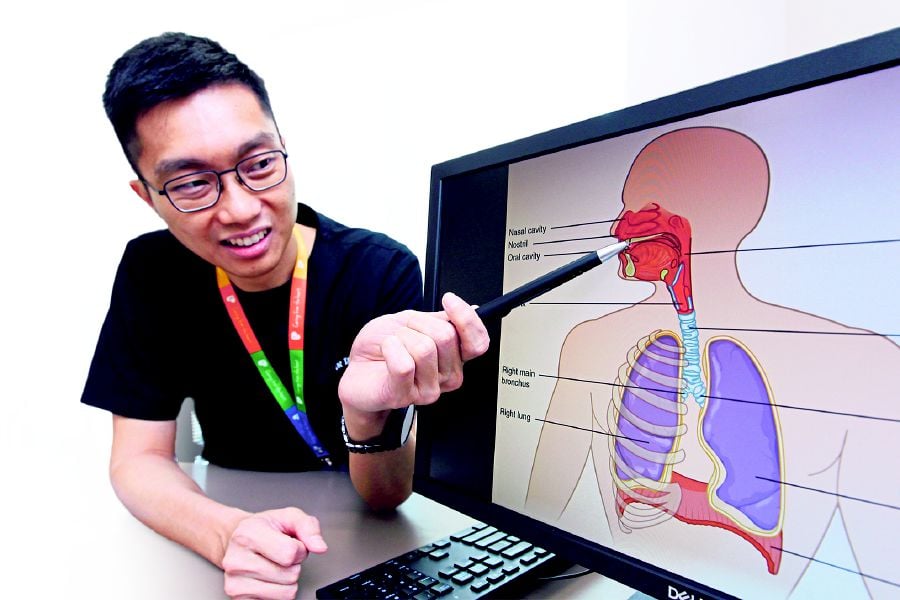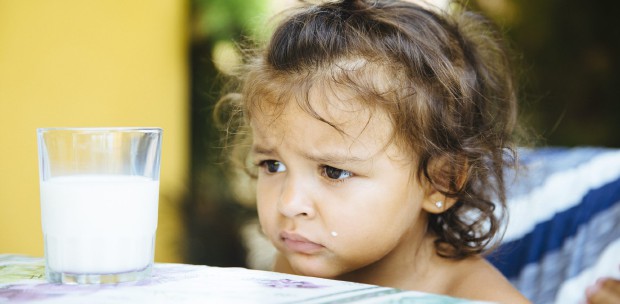MOST parents know the signs. The child wakes up complaining of a sore throat and soon, fever, coughing and nasal congestion sets in.
Respiratory tract infections are very common in young children and once they enter daycare or start preschool, these infections happen with increased frequency. The earlier the age of enrolment, the higher the number of infections.
In fact, it's not unusual for a child to experience 10 to 12 respiratory infections a year, says Pantai Hospital Kuala Lumpur consultant paediatrician and paediatric intensivist Dr Tai Chian Wern.
Although daycare or preschool is associated with increased infections, it plays an important role in helping children with social development so rather than removing children from such settings, parents should consider ways to reduce the risk of these infections.

SUSCEPTIBILITY AND PROTECTION
Dr Tai says children above 6 months of age tend to be more susceptible to respiratory infections.
During the last three months of pregnancy, antibodies are passed from mother to child. The amount and type of antibodies passed will depend on the mother's immunity.
For example, if the mother had a prior chicken pox infection, antibodies against chicken pox would be present and passed on to the foetus.
However, this form of passive immunity is transient, and the antibodies will usually wane once the newborn is 6 months old.
"Antibodies are also passed from mother to child through breastfeeding and studies have shown that exclusive breastfeeding for six months will lead to a lower incidence of infections in infants compared with babies who are not breastfed."
Respiratory tract infections are usually classified into upper and lower respiratory tract infections.
Dr Tai says upper respiratory tract infections include the common cold, pharyngitis, laryngitis, ear infections and croup. Examples of lower respiratory tract infections are pneumonia and bronchiolitis.
In Malaysia, the prevalence of pneumonia in children under 5 is between 28 and 39 per cent of hospital admissions. It is the fifth highest cause of death among children under 5 years.
"Most respiratory infections are viral in origin and in Malaysia, these infections happen all year round, not following a seasonal pattern like in temperate countries, where they tend to peak during winter."
Common viruses causing respiratory infections include rhinovirus, influenza, parainfluenza, respiratory syncytial virus (RSV), coronavirus and human metapneumovirus.
Bacterial infections meanwhile lead to streptococcus pneumoniae, klebsiella pneumoniae and mycoplasma pneumoniae.
Since most respiratory infections are viral in origin, they are usually self-limiting. If diagnosed early, antivirals may reduce the severity of influenza infections.
"Antibiotics are only needed if the infection is suspected to be of bacterial origin or if the viral illness has prolonged and a secondary bacterial infection has set in," explains Dr Tai.
Most children with an upper respiratory tract infection will recover within five to seven days.

Some children with acute respiratory tract infections may need to be hospitalised, especially if they are unable to eat normally, are less active, or have "noisy breathing", which may indicate an obstructed airway.
Children with lower respiratory tract infections may take longer to recover, especially if complications develop.
Those with bacterial infections such as pneumonia also tend to be more unwell with persistent high fever.
Dr Tai says if the child develops pneumonia or bronchiolitis or has rapid breathing, wheezing, reduced feeding and is less active, hospitalisation is required.
These children may require oxygen supplementation, and respiratory and nutritional support.
He stresses that it's important to seek treatment early in such situations to prevent complications such as abscess or bloodstream infection/sepsis.
PROTECTION/PREVENTION
*Inculcate good personal and hand hygiene
* Practise cough etiquette
* Wear a face mask if unwell
* Ensure children have adequate sleep/a proper bedtime routine
* Stay up-to-date with vaccinations
* Optimise nutrition/balanced diet
* Supplement with vitamin C to boost immunity if diet is inadequate/lacking
* Be judicious in the use of antibiotics to avoid disruptions to gut microbiome, which impacts the immune system

Upper Respiratory Tract Infection
Common symptoms
Sore throat
Runny nose/nasal congestion
Cough
Non-specific symptoms
Fever
Malaise
Reduced appetite
Muscle aches
Lower Respiratory Tract Infection
In addition to the symptoms indicated above, other signs will include:
Rapid/noisy breathing
Irritability
Less active
Refusal to feed
Signs of respiratory failure
Paleness
Bluish discolouration of the lips
Shallow breathing
*This warrants urgent medical treatment




